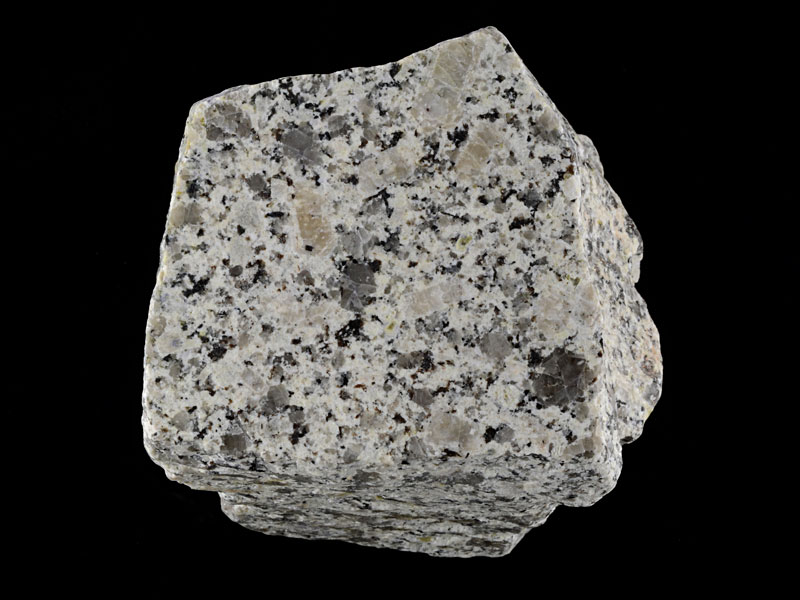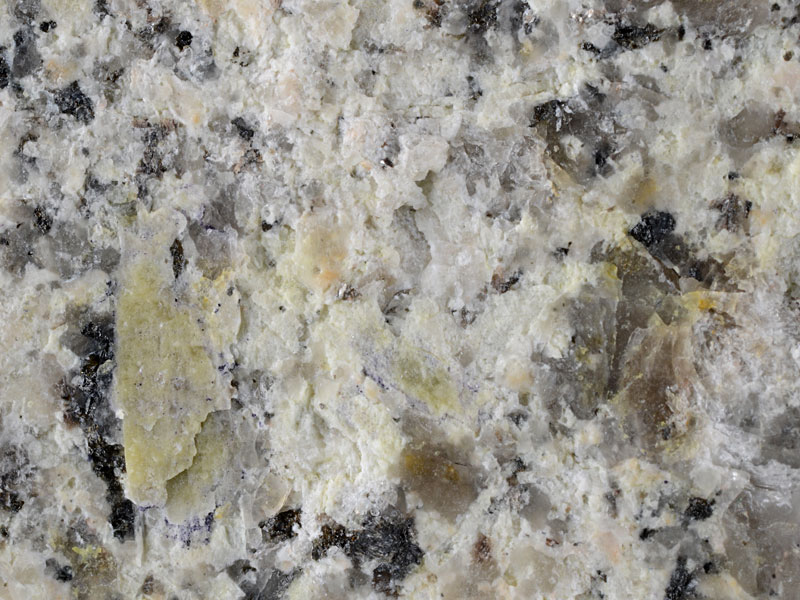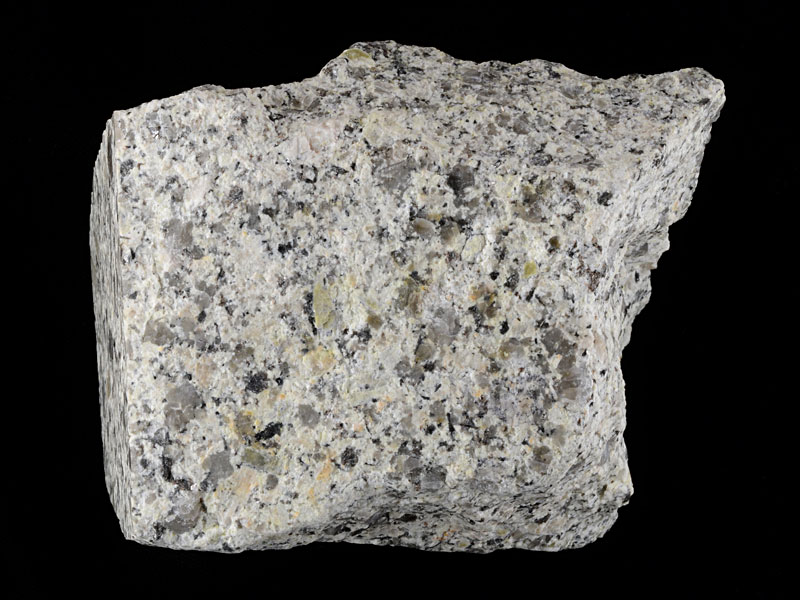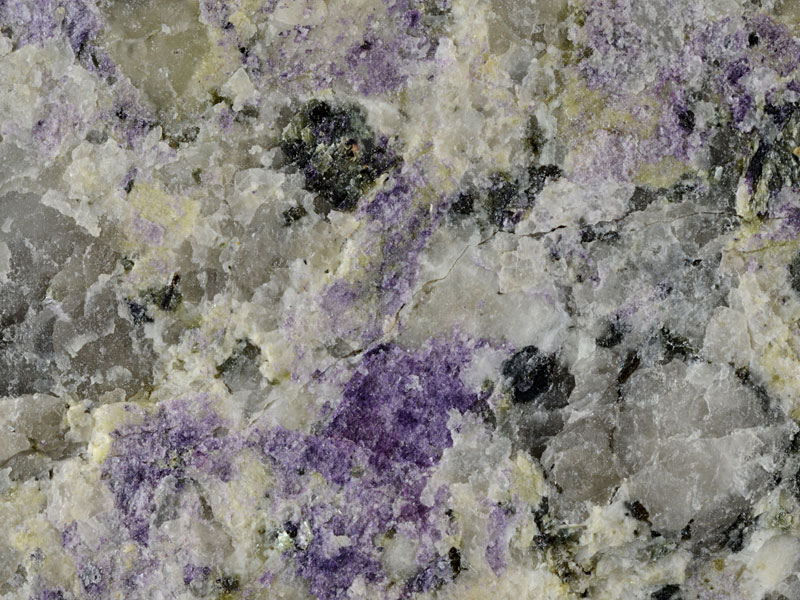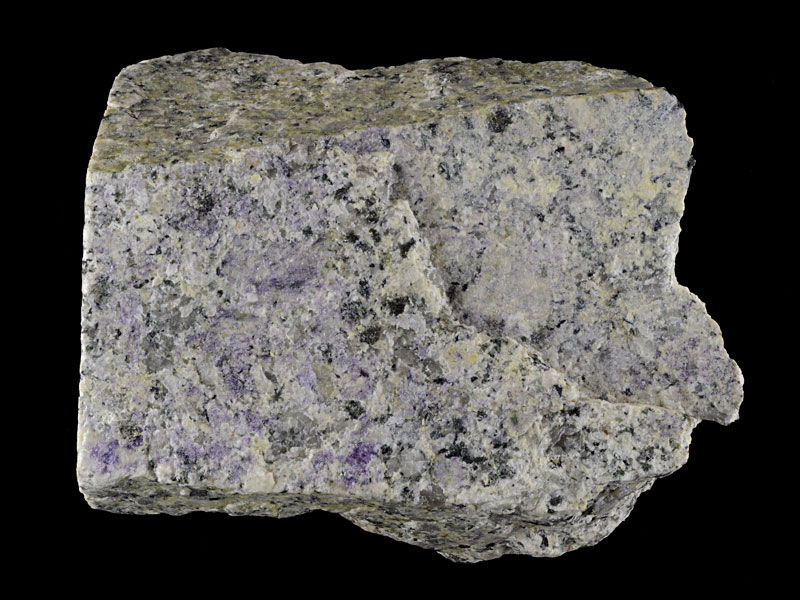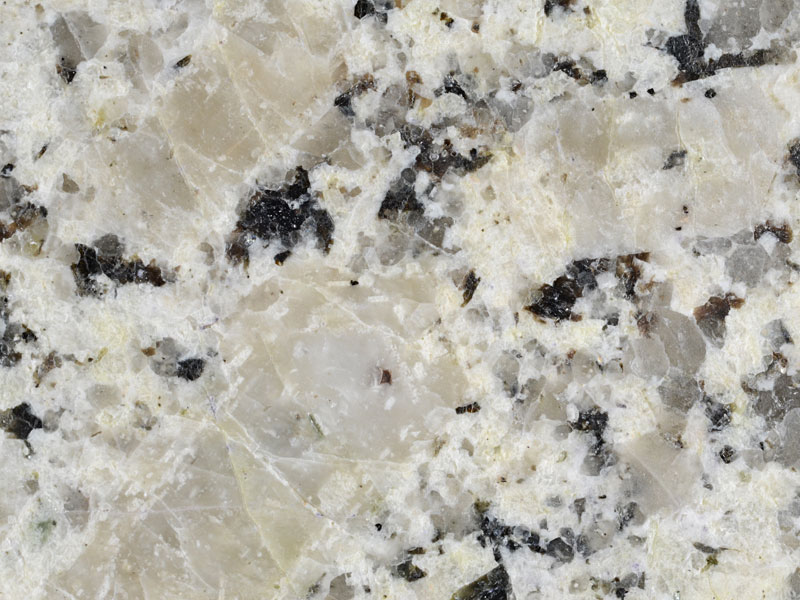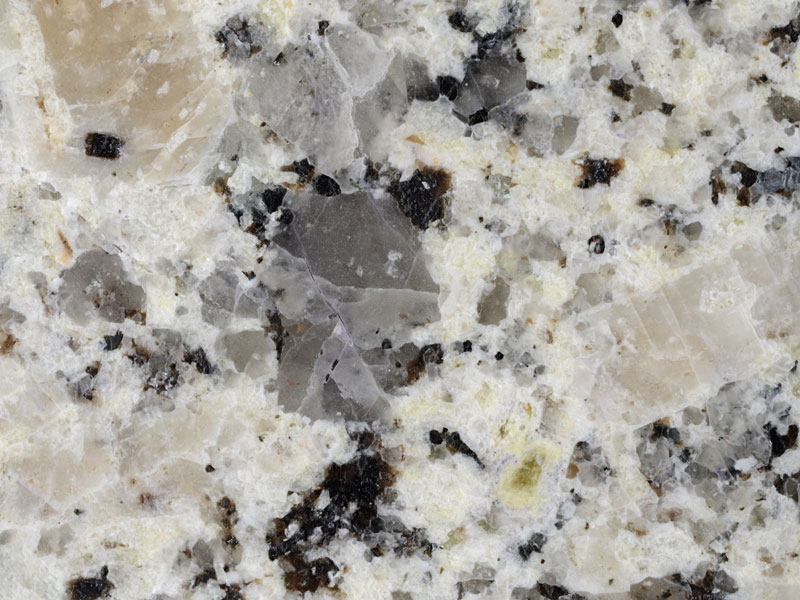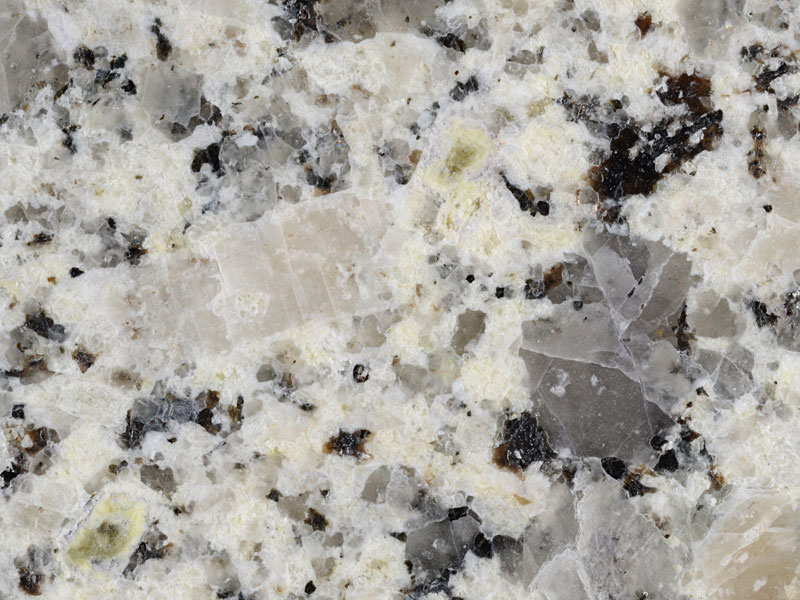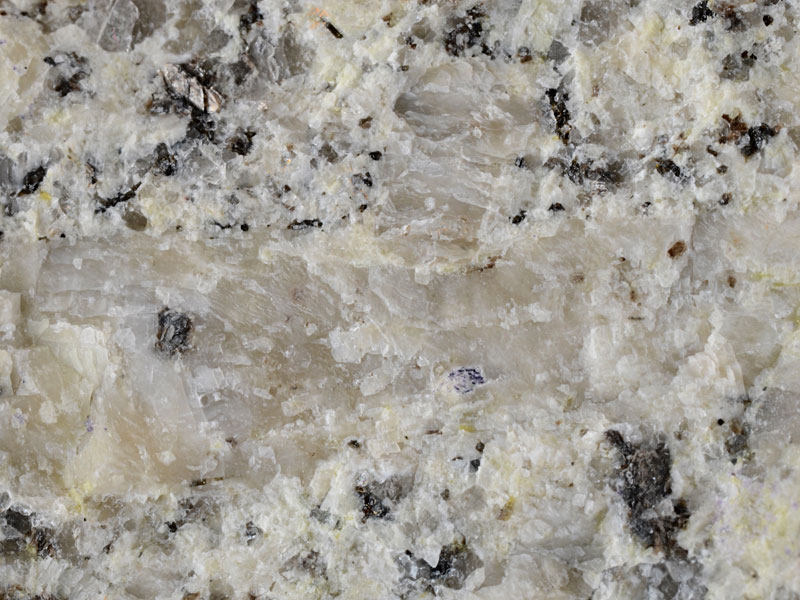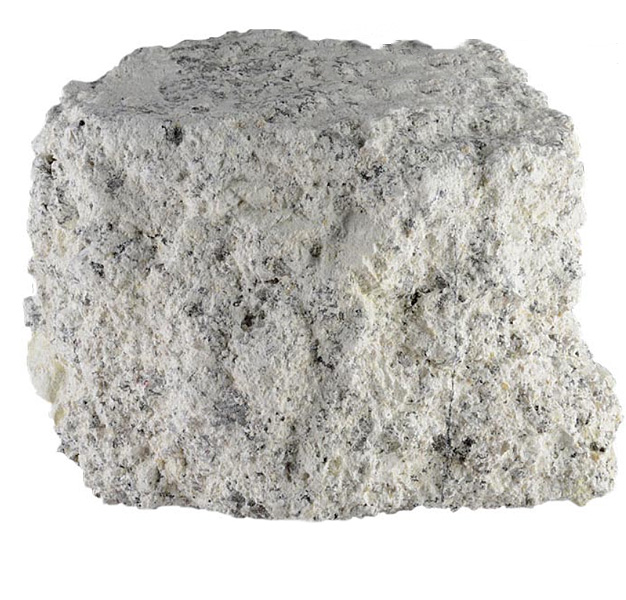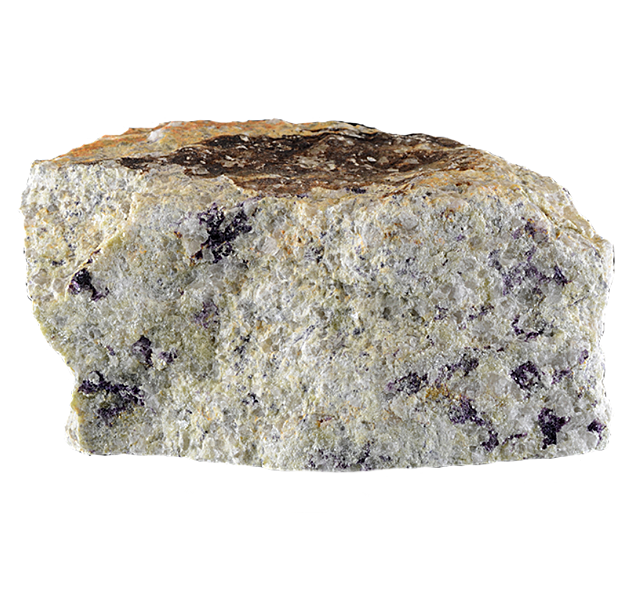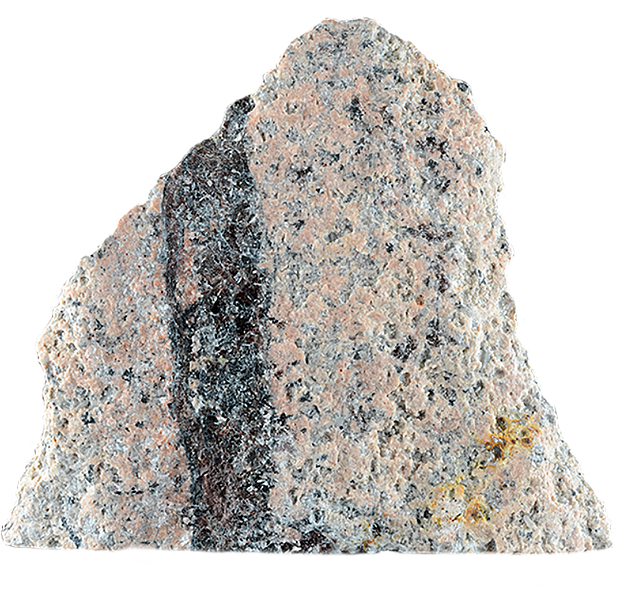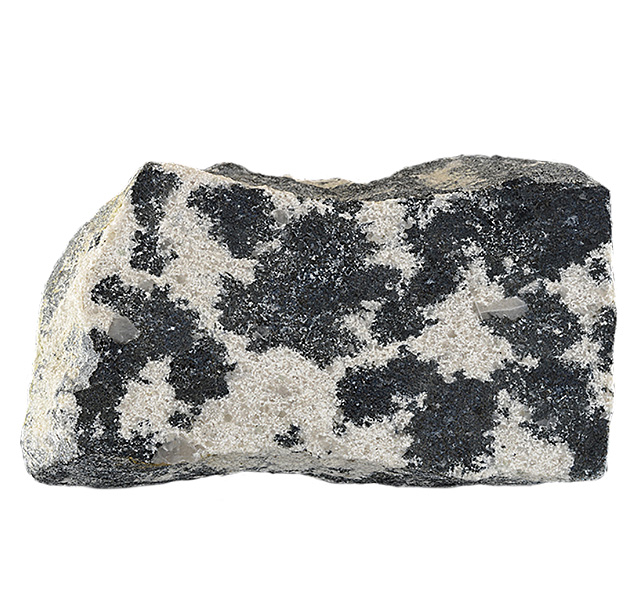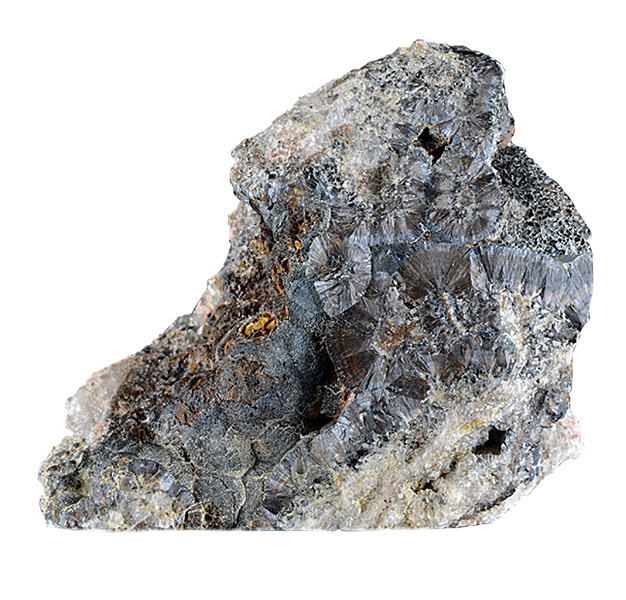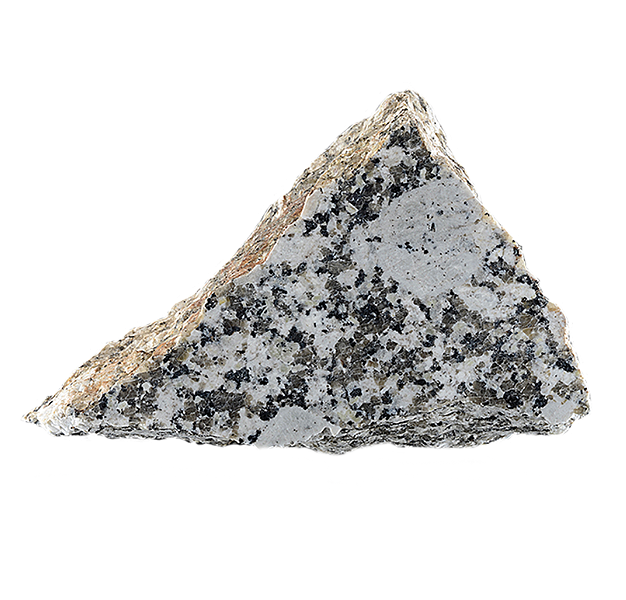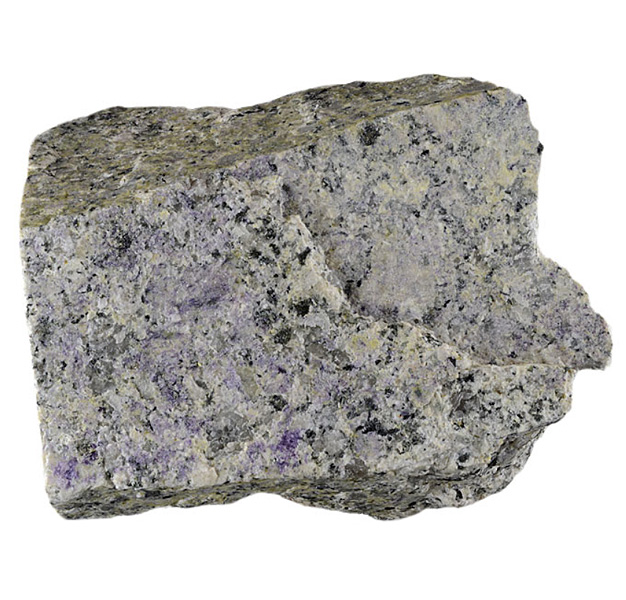
Fact sheet
The presence of purple fluorite on joint planes gives the first indication that this sample is unusual .......but can you see fluorite in thin section?
In thin section the pale brown mica is typical of the lithium-rich species zinnwaldite. It is associated with brown tourmaline, quartz and feldspar. Note that the feldspar is cloudly in appearance - an indication that is has been subjected to a limited degree of hydrothermal alteration. Look closely to see topaz too - further evidence of an extremely evolved granite.
One interpretation for this rock is that it was a tourmaline granite similar to that in the west of the complex, but that it has been strongly affected by later magmatic-hydrothermal fluids (when Li-mica, fluorite and topaz appeared). Ask yourself - does the Li-mica look primary or secondary? ........and should the sample be grouped with the tourmaline granites to the west, or fluorite granites to the east? It really is a borderline case.
A case study of the St Austell granite complex in Cornwall, England, illustrating the range of rocks associated with a granite intrusion. The earliest part of the complex is a siderophyllite (biotite) granite containing muscovite and tourmaline typical of a SW England granite, with many primary magmatic features.
This early intrusion was followed by the intrusion of an evolved volatile-rich magma which was the driving force behind a series of intense hydrothermal processes as volatiles escaped from this magma and helped to establish an extensive alteration halo (aureole). Boron, fluorine and lithium (as well as water) played major roles in the formation of the second intrusion and in the associated hydrothermal processes. Igneous activity lasted around 18 million years from 282 Ma (siderophyllite granite) to 265 Ma (fluorite granite).
